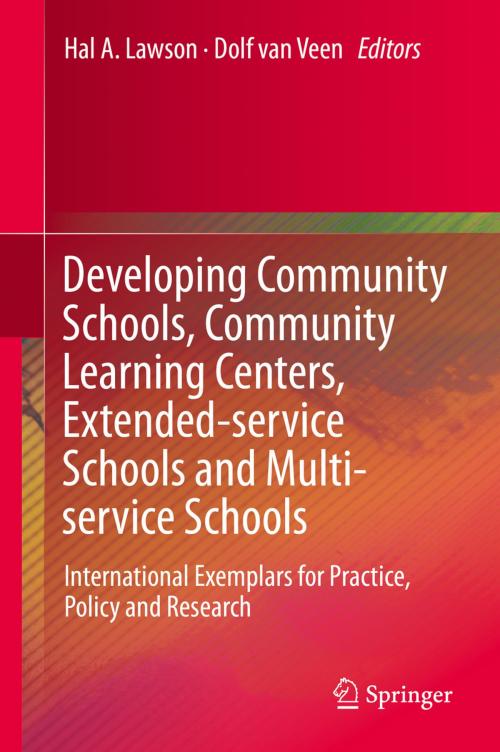Developing Community Schools, Community Learning Centers, Extended-service Schools and Multi-service Schools
International Exemplars for Practice, Policy and Research
Nonfiction, Reference & Language, Education & Teaching, Educational Theory, Educational Reform, Administration| Author: | ISBN: | 9783319256641 | |
| Publisher: | Springer International Publishing | Publication: | December 14, 2015 |
| Imprint: | Springer | Language: | English |
| Author: | |
| ISBN: | 9783319256641 |
| Publisher: | Springer International Publishing |
| Publication: | December 14, 2015 |
| Imprint: | Springer |
| Language: | English |
This book focuses on special organizational configurations for schools in diverse parts of the world. Some of these new organizational and institutional designs are called multi-service schools, others are called extended service schools and still others are called community learning centers. While these schools have different names and notable different characteristics, they belong in the same category because of a common feature in their design: they connect schools with once-separate community programs and services.Chief among the prototypes for these new organizational and institutional designs are the ones featured in the book’s title. Some are called multi-service schools to indicate that they selectively provide some new programs and services. Others are called extended service schools to indicate that they serve young people beyond the regular school day, seeking influence and control over out-of-school time while enabling alternative teaching-learning strategies, and providing services other than typical “pupil support services.” Still others are called community learning centers, a name that showcases the educational functions and priorities of schools and announcing priorities for adult learning and development. Community schools, still called in some places full-service community schools, serves as a prototype that increasingly positions schools as multi-purpose, multi-component, anchor institutions serving identifiable neighborhoods and entire rural communities. The book is structured to enhance understanding of these organizational prototypes and provides comparative social analysis. It also identifies knowledge needs and gaps as well as developmental territory for the future.
This book focuses on special organizational configurations for schools in diverse parts of the world. Some of these new organizational and institutional designs are called multi-service schools, others are called extended service schools and still others are called community learning centers. While these schools have different names and notable different characteristics, they belong in the same category because of a common feature in their design: they connect schools with once-separate community programs and services.Chief among the prototypes for these new organizational and institutional designs are the ones featured in the book’s title. Some are called multi-service schools to indicate that they selectively provide some new programs and services. Others are called extended service schools to indicate that they serve young people beyond the regular school day, seeking influence and control over out-of-school time while enabling alternative teaching-learning strategies, and providing services other than typical “pupil support services.” Still others are called community learning centers, a name that showcases the educational functions and priorities of schools and announcing priorities for adult learning and development. Community schools, still called in some places full-service community schools, serves as a prototype that increasingly positions schools as multi-purpose, multi-component, anchor institutions serving identifiable neighborhoods and entire rural communities. The book is structured to enhance understanding of these organizational prototypes and provides comparative social analysis. It also identifies knowledge needs and gaps as well as developmental territory for the future.















